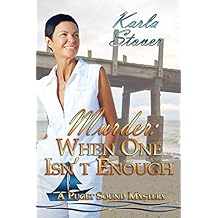 |
| Hemmingway in Idaho |
Every writer lives with a great fear: the loss of ability
to continue writing. Often, it is writer’s block, mostly caused by poor
plotting or structural problems in a manuscript, but sometimes, it may have a
more serious origin.
On July 2, 1961, fifty-seven years ago, in Ketchum, Idaho,
Ernest Hemmingway killed himself with a shotgun blast. In the spring of the
same year, he had been requested to contribute a single sentence for a presentation
volume marking President John F. Kennedy’s inauguration. He told his lifelong
friend and biographer, A.E. Hotchner: “It just won’t come anymore,” and wept.
It was a year earlier, in 1960, that Hemmingway
discovered that he could no longer write. It turned out to be a devastating
blow to a prolific author who deeply connected his self-worth with his creativity.
That discovery triggered a deep depression from which he could not escape.
In some ways, Hemmingway was uniquely vulnerable to
depression. Part of it was hereditary: his father had committed suicide in
1928, ironically enough, in the manner. His grandfather, brother, sister and
granddaughter all did the same. Hemmingway also suffered from an enormous list
of medical conditions: bi-polar mood disorder, chronic alcoholism, brain
injuries and hemochromatosis, a disease that results in damage to the internal
organs and is linked with depression. He also had a morbid fascination with guns
and death; as a child hunting in the Michigan wilderness; as a correspondent
covering the Spanish Civil war and in the uncounted hundreds of big game he
killed in Africa. Indeed the pages of his works are filled with violent death,
whether human or animal.
Yet, writers as a group are particularly vulnerable to
depression. In an article titled “The Neurological Similarities between Successful
Writers and the Mentally Ill,” Cody Delistraty[1] lists
several reasons for this. Writers think a lot, and people entangled in their thoughts
tend to be withdrawn. He says, “add long periods of isolation and high levels
of narcissism that draws someone to a career like writing, and it seems obvious
why they may not be the happiest bunch.” Other findings suggest an unusually
high percentage of alcoholics in the writing community.
But brain science may give a clearer explanation. In the
same article, a connection between creativity and the inability to suppress the
precuneus portion of the brain is suggested. The precuneus part of the brain
regulates self-consciousness, memory and creativity. For ordinary people, it is
most active during rest, when the brain is allowed to “day-dream.” For
creatives, however, it doesn’t turn off. And this may explain why the best writers find
unusual associations and unique, even bizarre, ways of looking at the world.
They cannot stop thinking. Unfortunately, this condition is also tied in with
depression.
Hemmingway is a classic example of misdiagnosed, or even
undiagnosed, mental illness. Today, our understanding of mental illness has
significantly advanced and cures are more readily available. One can only
wonder what further works of genius he might have produced had such treatments been available during his decline.
[1] https://thoughtcatalog.com/cody-delistraty/2014/03/the-neurological-similarities-between-successful-writers-and-the-mentally-ill/
Mohan Ashtakala is the author of "The Yoga Zapper" (www.yogazapper.com) published by Books We love (www.bookswelove.net)














 Whether or not to write a sequel isn't an easy decision. Consider Dean Koontz who said, "Too many sequels diminish the original." or John Updike's pithy remark, "I suppose sequels are inevitable for writers of a certain."
Whether or not to write a sequel isn't an easy decision. Consider Dean Koontz who said, "Too many sequels diminish the original." or John Updike's pithy remark, "I suppose sequels are inevitable for writers of a certain."







